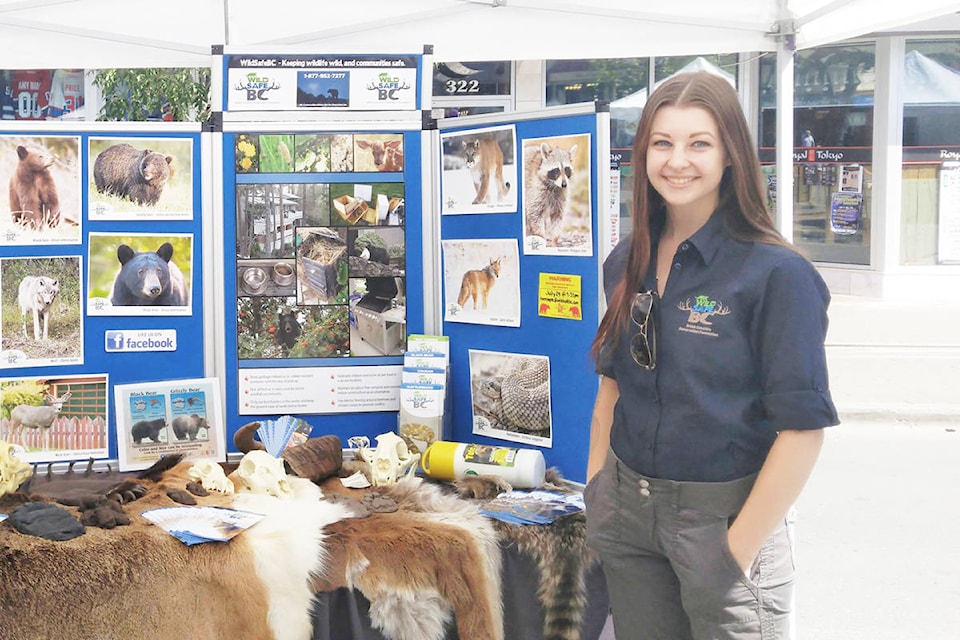By Jaime Polmateer
As part of B.C. Goes Wild Weekend, WildSafeBC is holding a paint night and bear education session at Little Fort Community Hall where participants will be guided through a wild life painting while learning about wildlife safety.
The event takes place Sept. 15 at 7 p.m. and is recommended for people ages 10 and older.
Because it’s the time of year when bears are filling up for hibernation, Thompson-Nicoal Regional District WildSafeBC community coordinator, Rhiannon Guerra, said it’s an important time to remind people about wilderness safety.
“(We hold) BC Goes Wild weekend annually; every year it’s the third weekend of September because the third week of September tends to be where we get the most wild life activity throughout the year,” she said.
“We made that a provincial event, not just to bring awareness to the activities with the wildlife and the human wildlife conflicts that happen that weekend, but also just to enjoy the outdoors and spread awareness of all the things we try to talk about with Wildsafe BC.”
She added during the paint night she’ll guide participants through a landscape scene featuring a bear while also covering topics like human/wildlife conflicts, attractant management and staying safe in bear country.
The time between August and October is a busy season for bears, as mentioned, because they go into what Guerra called hyperphagia and have to eat 20,000 calories of food before denning for the winter.
“Right now it’s super important for us to get our messaging across for people to manage their attractants to reduce the likelihood of a bear coming into conflict within a community,” she said.
“So making sure our garbage is stored properly, cleaning up our fruit trees, educating or reminding people of the things that may bring a bear into our backyard, or any other wildlife we could potentially have conflict with like cougars and deers—it’s really all about education because it’s easier to try and prevent a situation than to reacting to it after it already occurs.”
Regarding how to stay safe in bear country, she said she’ll talk about how to avoid encounters with bears and what to do if an encounter happens.
“It’s also reminding people that the things we can do as a community can really help in reducing the number of conflict calls the Conservation Officer Service gets, and ultimately the less number of bears would need to be destroyed throughout the province,” she said.
“Rather than trying to get a bear that’s already convinced garbage is a fantastic food source and dealing with that situation, we can try to just prevent that bear from getting into the garbage in the first place.”
Guerra also asks people RSVP their attendance by messaging her email, tnrd@wildsafebc.com, before Sept. 7 so she can ensure the proper amount of art supplies will be available for those who show up.
WildSafeBC is a non-profit organization so those who can donate paint brushes, acrylic paint or canvasses are encouraged, and those who can bring their own supplies are also welcome to do so.
